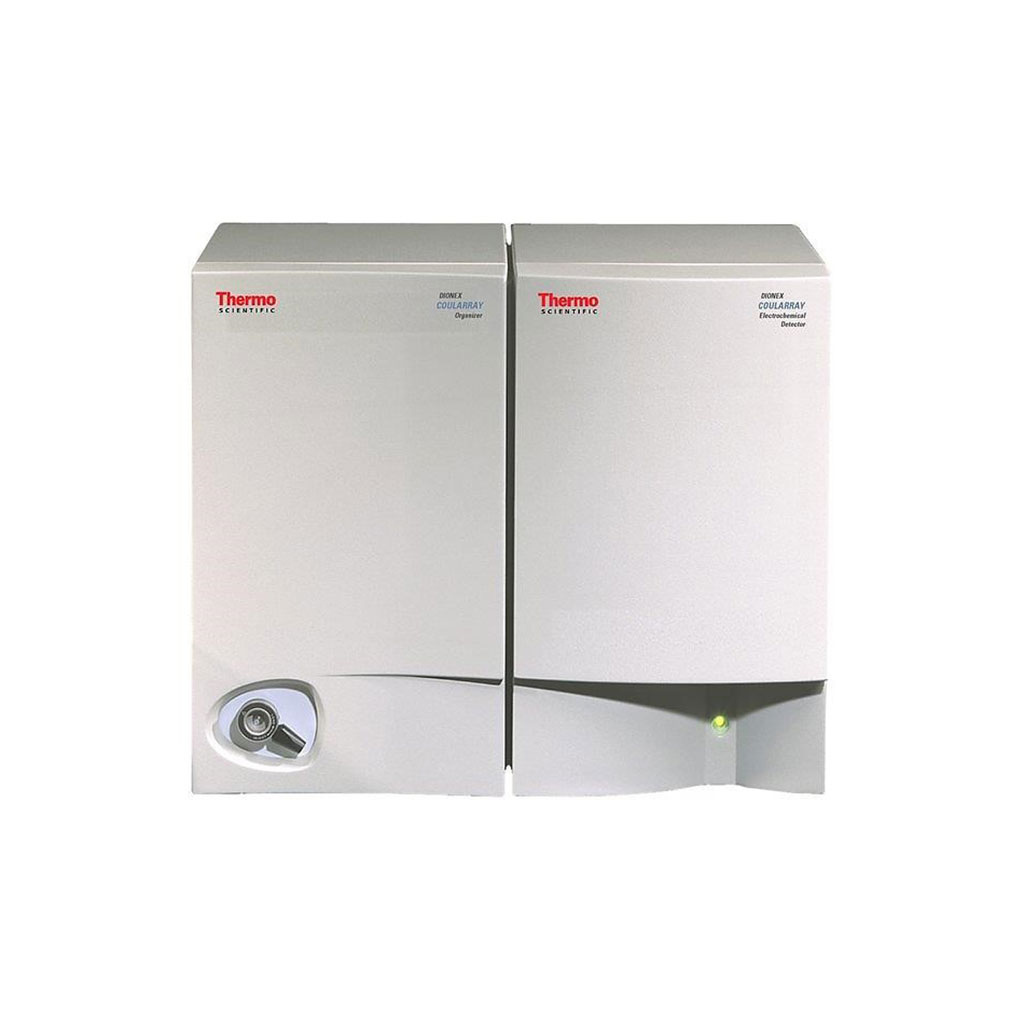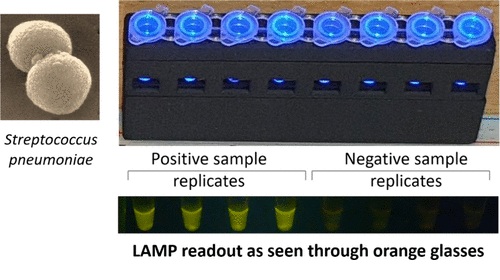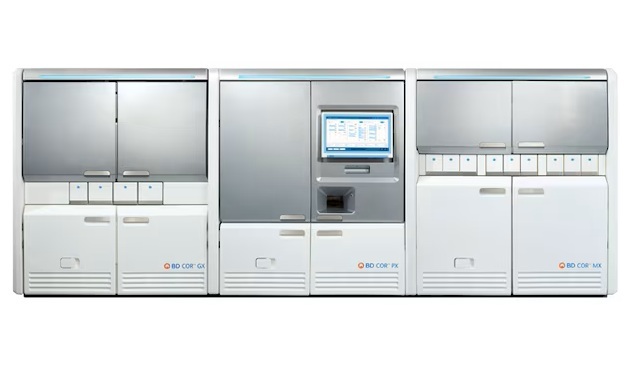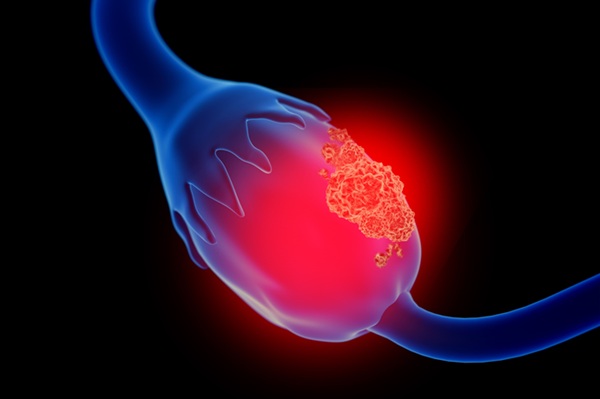Stabilized Urinary Biogenic Amines Measured in Clinical Chemistry Laboratories
|
By LabMedica International staff writers Posted on 23 Feb 2021 |

Image: The Dionex CoulArray Coulometric Array Detector (Photo courtesy of Thermo Fisher Scientific).
Carcinoid tumors are rare neuroendocrine tumors deriving from enterochromaffin cells secreting serotonin. The measurement of urinary 5-hydroxyindoleacetic acid (5-HIAA), the main product of serotonin metabolism, is used for the diagnosis and follow-up for this tumor.
Neuroblastomas are neoplasms that arise from neural crest-derived cell precursors of postganglionic sympathetic neurons and are characterized by excessive production of catecholamines (CATs). 5-HIAA, vanillylmandelic (VMA), homovanillic acid (HVA), catecholamines and metanephrines are produced in excess by catecholamine-producing tumors.
Medical Biochemists at the Lausanne University Hospital (Lausanne, Switzerland) obtained 22 urine spots from enrollees (aged 25 to 65, 50% males) and were aliquoted in 250 µL polypropylene tubes. The pH of urines was immediately measured using pH indicator strips. Each of the 22 urine samples was split into three sub-samples, one of which was supplemented by 5 mL of 6 M HCl per liter of urine (“HCl urine”), the second by 10 grams citrate per liter of urine (“citrate urine”), and the third was unmodified (“native urine”).
All the analytical methods used throughout the study were the routine methods from the laboratory and were fully validated. 5-HIAA, VMA, and HVA were measured in one aliquot by LC-MS/MS using a dilute-and-shoot sample preparation. The CATs were quantified in the third aliquot using the RECIPE catecholamine kit (Munich, Germany) using a 5600A electrochemical CoulArray system coupled to an isocratic HPLC (ESA-Dionex, Sunnyvale, CA, USA). CATs were also quantified by LC-MS/MS.
The scientists reported that that catecholamines degradation was prevented by HCl and citrate and that 5-HIAA was degraded in five out of 22 samples collected with HCl. All biogenic amines were efficiently stabilized by citrate for four weeks at 22 °C, except epinephrine (48 hours at 4 °C, or four weeks at −20 °C). Sodium citrate did not cause quantification or analytical artifacts concerns.
The authors concluded that sodium citrate is a non-hazardous alternative to HCl for patients to send unfrozen urine samples to the laboratory which may safely store the sample for four weeks. The team proposes to replace HCl by sodium citrate for stabilizing urinary 5-HIAA, VMA, HVA, catecholamines and total metanephrines as a safe alternative for clinical chemistry laboratory and patients. The study was published in the March, 2021 issue of the journal Clinica Chimica Acta.
Related Links:
Lausanne University Hospital
RECIPE
ESA-Dionex
Neuroblastomas are neoplasms that arise from neural crest-derived cell precursors of postganglionic sympathetic neurons and are characterized by excessive production of catecholamines (CATs). 5-HIAA, vanillylmandelic (VMA), homovanillic acid (HVA), catecholamines and metanephrines are produced in excess by catecholamine-producing tumors.
Medical Biochemists at the Lausanne University Hospital (Lausanne, Switzerland) obtained 22 urine spots from enrollees (aged 25 to 65, 50% males) and were aliquoted in 250 µL polypropylene tubes. The pH of urines was immediately measured using pH indicator strips. Each of the 22 urine samples was split into three sub-samples, one of which was supplemented by 5 mL of 6 M HCl per liter of urine (“HCl urine”), the second by 10 grams citrate per liter of urine (“citrate urine”), and the third was unmodified (“native urine”).
All the analytical methods used throughout the study were the routine methods from the laboratory and were fully validated. 5-HIAA, VMA, and HVA were measured in one aliquot by LC-MS/MS using a dilute-and-shoot sample preparation. The CATs were quantified in the third aliquot using the RECIPE catecholamine kit (Munich, Germany) using a 5600A electrochemical CoulArray system coupled to an isocratic HPLC (ESA-Dionex, Sunnyvale, CA, USA). CATs were also quantified by LC-MS/MS.
The scientists reported that that catecholamines degradation was prevented by HCl and citrate and that 5-HIAA was degraded in five out of 22 samples collected with HCl. All biogenic amines were efficiently stabilized by citrate for four weeks at 22 °C, except epinephrine (48 hours at 4 °C, or four weeks at −20 °C). Sodium citrate did not cause quantification or analytical artifacts concerns.
The authors concluded that sodium citrate is a non-hazardous alternative to HCl for patients to send unfrozen urine samples to the laboratory which may safely store the sample for four weeks. The team proposes to replace HCl by sodium citrate for stabilizing urinary 5-HIAA, VMA, HVA, catecholamines and total metanephrines as a safe alternative for clinical chemistry laboratory and patients. The study was published in the March, 2021 issue of the journal Clinica Chimica Acta.
Related Links:
Lausanne University Hospital
RECIPE
ESA-Dionex
Latest Clinical Chem. News
- VOCs Show Promise for Early Multi-Cancer Detection
- Portable Raman Spectroscopy Offers Cost-Effective Kidney Disease Diagnosis at POC
- Gold Nanoparticles to Improve Accuracy of Ovarian Cancer Diagnosis
- Simultaneous Cell Isolation Technology Improves Cancer Diagnostic Accuracy
- Simple Non-Invasive Hair-Based Test Could Speed ALS Diagnosis
- Paper Strip Saliva Test Detects Elevated Uric Acid Levels Without Blood Draws
- Prostate Cancer Markers Based on Chemical Make-Up of Calcifications to Speed Up Detection
- Breath Test Could Help Detect Blood Cancers
- ML-Powered Gas Sensors to Detect Pathogens and AMR at POC
- Saliva-Based Cancer Detection Technology Eliminates Need for Complex Sample Preparation
- Skin Swabs Could Detect Parkinson’s Years Before Symptoms Appear
- New Clinical Chemistry Analyzer Designed to Meet Growing Demands of Modern Labs

- New Reference Measurement Procedure Standardizes Nucleic Acid Amplification Test Results
- Pen-Like Tool Quickly and Non-Invasively Detects Opioids from Skin
- Simple Urine Test Could Detect Multiple Cancers at Early Stage
- Earwax Test Accurately Detects Parkinson’s by Identifying Odor Molecules
Channels
Molecular Diagnostics
view channel
New Diagnostic Method Detects Pneumonia at POC in Low-Resource Settings
Pneumonia continues to be one of the leading causes of death in low- and middle-income countries, where limited access to advanced laboratory infrastructure hampers early and accurate diagnosis.... Read more
Blood Immune Cell Analysis Detects Parkinson’s Before Symptoms Appear
Early diagnosis of Parkinson’s disease remains one of the greatest challenges in neurology. The condition, which affects nearly 12 million people globally, is typically identified only after significant... Read moreHematology
view channel
ADLM’s New Coagulation Testing Guidance to Improve Care for Patients on Blood Thinners
Direct oral anticoagulants (DOACs) are one of the most common types of blood thinners. Patients take them to prevent a host of complications that could arise from blood clotting, including stroke, deep... Read more
Viscoelastic Testing Could Improve Treatment of Maternal Hemorrhage
Postpartum hemorrhage, severe bleeding after childbirth, remains one of the leading causes of maternal mortality worldwide, yet many of these deaths are preventable. Standard care can be hindered by delays... Read more
Pioneering Model Measures Radiation Exposure in Blood for Precise Cancer Treatments
Scientists have long focused on protecting organs near tumors during radiotherapy, but blood — a vital, circulating tissue — has largely been excluded from dose calculations. Each blood cell passing through... Read moreImmunology
view channel
Blood-Based Liquid Biopsy Model Analyzes Immunotherapy Effectiveness
Immunotherapy has revolutionized cancer care by harnessing the immune system to fight tumors, yet predicting who will benefit remains a major challenge. Many patients undergo costly and taxing treatment... Read more
Signature Genes Predict T-Cell Expansion in Cancer Immunotherapy
Modern cancer immunotherapies rely on the ability of CD8⁺ T cells to rapidly multiply within tumors, generating the immune force needed to eliminate cancer cells. However, the biological triggers behind... Read moreMicrobiology
view channel
High-Throughput Enteric Panels Detect Multiple GI Bacterial Infections from Single Stool Swab Sample
Gastrointestinal (GI) infections are among the most common causes of illness worldwide, leading to over 1.7 million deaths annually and placing a heavy burden on healthcare systems. Conventional diagnostic... Read more
Fast Noninvasive Bedside Test Uses Sugar Fingerprint to Detect Fungal Infections
Candida bloodstream infections are a growing global health threat, causing an estimated 6 million cases and 3.8 million deaths annually. Hospitals are particularly vulnerable, as weakened patients after... Read morePathology
view channel
New Molecular Analysis Tool to Improve Disease Diagnosis
Accurately distinguishing between similar biomolecules such as proteins is vital for biomedical research and diagnostics, yet existing analytical tools often fail to detect subtle structural or compositional... Read more
Tears Offer Noninvasive Alternative for Diagnosing Neurodegenerative Diseases
Diagnosing and monitoring eye and neurodegenerative diseases often requires invasive procedures to access ocular fluids. Ocular fluids like aqueous humor and vitreous humor contain valuable molecular information... Read moreTechnology
view channel
Cell-Sorting Device Uses Electromagnetic Levitation to Precisely Direct Cell Movement
Sorting different cell types—such as cancerous versus healthy or live versus dead cells—is a critical task in biology and medicine. However, conventional methods often require labeling, chemical exposure,... Read more
Embedded GPU Platform Enables Rapid Blood Profiling for POC Diagnostics
Blood tests remain a cornerstone of medical diagnostics, but traditional imaging and analysis methods can be slow, costly, and reliant on dyes or contrast agents. Now, scientists have developed a real-time,... Read moreIndustry
view channel
Qiagen Acquires Single-Cell Omics Firm Parse Biosciences
QIAGEN (Venlo, Netherlands) has entered into a definitive agreement to fully acquire Parse Biosciences (Seattle, WA, USA), a provider of scalable, instrument-free solutions for single-cell research.... Read more
Puritan Medical Products Showcasing Innovation at AMP2025 in Boston
Puritan Medical Products (Guilford, ME, USA), the world’s most trusted manufacturer of swabs and specimen collection devices, is set to exhibit at AMP2025 in Boston, Massachusetts, from November 11–15.... Read more
Advanced Instruments Merged Under Nova Biomedical Name
Advanced Instruments (Norwood, MA, USA) and Nova Biomedical (Waltham, MA, USA) are now officially doing business under a single, unified brand. This transformation is expected to deliver greater value... Read more









 Analyzer.jpg)












